New Energy Nexus Vietnam is excited to announce the launch of the Women’s Agribusiness Climate Adaptation Accelerator, a program that forms part of the Business Partnerships Platform (BPP) in the Mekong Delta, Vietnam.
This initiative is a testament to our commitment to tackling climate change and creating positive outcomes for local communities, with a particular emphasis on empowering women. In collaboration with the Australian Department of Foreign Affairs and Trade (DFAT), the accelerator is one of four new business partnerships launched under the BPP Climate Adaptation Partnerships in the Mekong Delta in November 2023.

The BPP Climate Adaptation Partnerships in the Mekong Delta aim to support the joint efforts of Vietnam and Australia in addressing the challenges posed by climate adaptation. By partnering with inclusive businesses operating in the agriculture sector, these partnerships seek to develop sustainable business models while delivering vital social, gender equality, and development benefits to the Mekong communities. The Women’s Agribusiness Climate Adaptation Accelerator is a key component of this initiative, focusing on empowering women entrepreneurs to overcome climate change-related obstacles and contribute to the region’s resilience.
The Business Partnerships Platform (BPP) supports strategic development outcomes by facilitating partnerships between the Australian Department of Foreign Affairs and Trade (DFAT) and inclusive, commercially-sustainable businesses. Since its inception in 2016, the BPP has fostered 16 business partnerships in Vietnam, with seven specifically located in the Mekong Delta. These partnerships prioritize gender equality, disability inclusion, social integration, and climate impact, promoting sustainable development and positive change.
The Women’s Agribusiness Climate Adaptation Accelerator is a testament to the BPP’s commitment to gender equality and social inclusion. By providing tailored training, mentorship, access to finance, small grants, and networking opportunities, the accelerator aims to empower women entrepreneurs in the Mekong Delta. Through this targeted support, women-led enterprises will be better equipped to navigate climate change challenges, build resilience, and contribute to the economic and social well-being of the region.
As we launch the Women’s Agribusiness Climate Adaptation Accelerator, we invite all stakeholders, including women entrepreneurs, investors, policymakers, and the community, to join us in creating a sustainable and inclusive future for the Mekong Delta. By harnessing the power of partnerships and supporting women-led enterprises, we can drive positive change, strengthen local economies, and enhance the region’s resilience in the face of climate change.
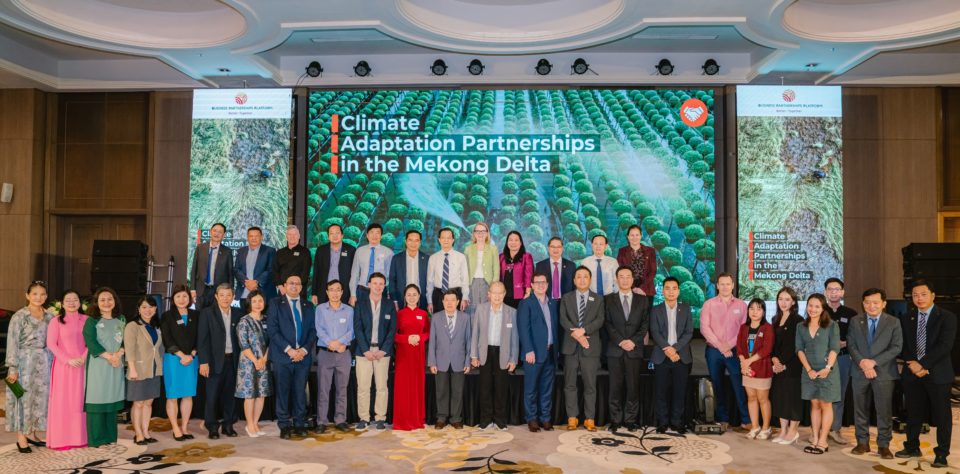
The launch of the Women’s Agribusiness Climate Adaptation Accelerator under the Business Partnerships Platform (BPP) in the Mekong Delta signifies a significant step towards empowering women entrepreneurs and addressing climate change. This initiative aligns with the joint efforts of Vietnam and Australia to create sustainable, inclusive, and resilient communities. Together, through collaboration and targeted support, we can unlock the potential of women-led enterprises and pave the way for a brighter and more sustainable future in the Mekong Delta.
Stay updated on the Women’s Agribusiness Climate Adaptation Accelerator and other BPP initiatives by visiting our website.
5 December 2023, Abu Dhabi – New Energy Nexus (NEX) today announces new opportunities for climate tech startups to grow in the United Arab Emirates (UAE)
New Energy Nexus is the Program Operator for Hub71’s new program to support early stage climate tech companies from around the world, and is partnering with the Abu Dhabi Investment Office (ADIO) to help growth and later stage climate tech companies set up and land in Abu Dhabi.
Danny Kennedy, CEO at New Energy Nexus, said: “One thing we’ve learnt from building entrepreneur support ecosystems in 12 countries for nearly 20 years is that good ideas and talk are not enough. We need capital, talent and demand. Diverse entrepreneurs are essential elements to the clean energy transition due to their ability to innovate quickly, disrupt industries, and launch and scale rapidly. And for its part, the UAE is a good place for clean energy startups to land and to find capital; as well as mentors, partners and customers. With ADIO and HUB71, we have well established partners to support startups around the world to access this huge potential and accelerate climate solutions across the region.”
Jamie Levy, Senior Advisor at ADIO, said: “We’re incredibly excited to be working with COP28 to host the New Energy Nexus COP28 Climate Tech Startup Accelerator to support 100 global climate tech startups. We’re attracting the world’s leading climate tech companies to Abu Dhabi to benefit from the Emirate’s positive and enabling investment environment. We empower companies by accelerating their growth, amplifying their impact and providing access to strategic opportunities across key markets and sectors.”
Ahmad Ali Alwan, Deputy Chief Executive Officer of Hub71, said: “As the world demands urgent climate action, we recognize the future hinges on innovative solutions. Startups are at the forefront of harnessing breakthrough technologies, so we created Hub71+ ClimateTech. This collaborative ecosystem offers a platform for climate innovators to thrive, with the support of world-class partners committing substantial capital and expertise. ClimateTech is not just a pathway to decarbonization but offers a solid foundation to contribute to a sustainable future for our planet. We are not only investing in the success of environmentally focused entrepreneurs but collectively empowering ClimateTech startups to scale globally from Abu Dhabi while making a positive impact that will further promote a net zero future.”
With ADIO, New Energy Nexus aims to strengthen capacity building of startups and increase their access to capital, strategic investors and the wider Abu Dhabi ecosystem.
Hub71 has launched with several partners a program called Hub71+ ClimateTech of which NEX is an implementing partner. Other partners of Hub71+ ClimateTech have committed over AED12 million (US$3.26 million) in 2024 to support the growth of climate tech startups, which will be able to leverage the knowledge and expertise of more than 25 corporate and investment partners and policymakers. This access will enable startups to explore commercial opportunities and tap into venture capital partners and investors looking to make impactful investments in climate tech.
Startups will also enroll in a customized and sector-specific three-month course to receive expert mentorship, tailored advice and critical support. Additionally, the supporting partners will collaborate to explore the future of climate tech, funding availability for climate ventures and pathways for startups to play a more significant role in the journey to Net Zero.
About Hub71
Hub71 is Abu Dhabi’s global tech ecosystem that enables founders to build globally enduring homegrown tech companies in any sector by providing access to global markets, a capital ecosystem, a global network of partners, and a vibrant community filled with highly skilled talent, governed by forward-thinking regulation.
Backed by the Government of Abu Dhabi and Mubadala Investment Company, Hub71 is growing its vibrant community of tech startups, investors, government, and corporate partners to ensure the availability of investment, commercial activities, and incentives from the public and private sectors. Through Hub71’s entrepreneurial infrastructure, value-add programs, enabling services and support packages, founders can build and scale widely adopted technologies with purpose and impact. Hub71 is on a mission to introduce new minds and technologies to Abu Dhabi, finding new ways to build globally enduring technology companies and sustain the nation’s continuous economic development.
For more information visit www.hub71.com and follow us on @Hub71AD #Hub71.
About Abu Dhabi Investment Office (ADIO)
The Abu Dhabi Investment Office (ADIO) enables local, regional and international investors to thrive and grow in the UAE capital through its close collaboration with government partners, sovereign investors, and national champions. ADIO is Abu Dhabi’s premier platform that empowers the private sector to grow, partner and compete globally by providing access to growth opportunities, strategic partnerships and new markets across key sectors that range from real estate and infrastructure, to industries and agribusiness, enhancing the nation’s investment in talent, innovation and sustainability.
With a growing network of global offices, investors can contact ADIO by visiting its head office in Abu Dhabi or international offices located in Beijing, Frankfurt, London, New York, Paris, San Francisco, Seoul, and Tel Aviv.
Visit https://www.investinabudhabi.gov.ae for more information.
Tristan Tremschnig
Communications Director, New Energy Nexus
+1 562 844 5999
tristan.tremschnig@newenergynexus.com
About New Energy Nexus
New Energy Nexus (NEX) is an international organization that strives towards a 100% clean energy economy for 100% of the population. It does this with a laser focus on diverse entrepreneurs, supporting them with accelerators, funds, skills, and networks they need to thrive. NEX has accelerated 1,500+ startups, empowered over 10,400+ entrepreneurs, and mobilized over US$4.7 billion in investment. Since its founding in California in 2004, NEX now operates programs or advisory services in Australia, China, India, Indonesia, Nigeria, Pakistan, the Philippines, Thailand, the UAE, Uganda, the USA (California and New York), and Vietnam.
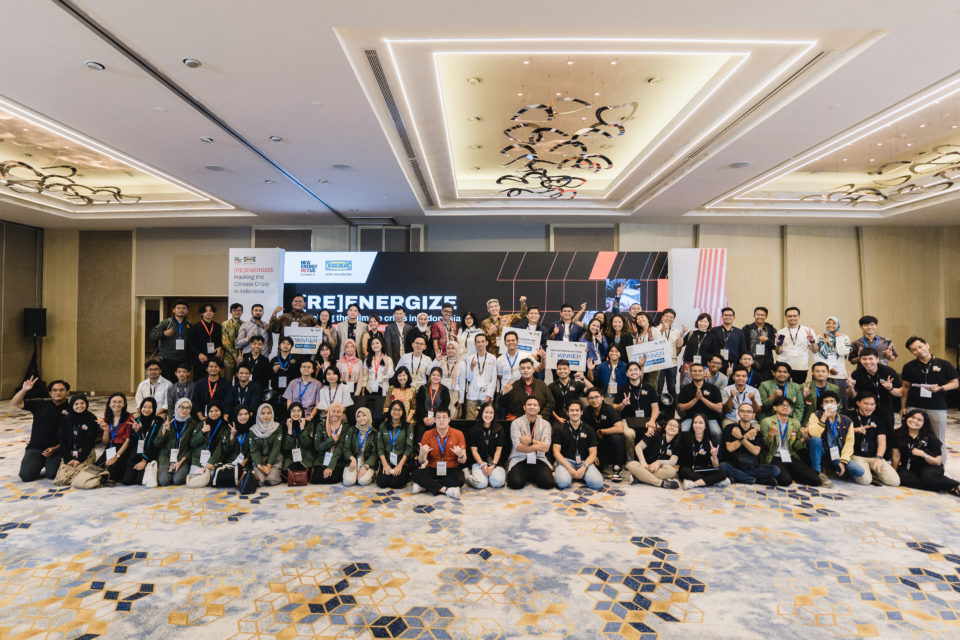
New Energy Nexus Indonesia recently held its fourth hackathon with hundreds of participants across the clean energy, impact investment, and climate tech sectors. Here are four key takeaways for aspiring and current entrepreneurs looking to enter the space.
The clean energy transition must be about “significant structural” changes
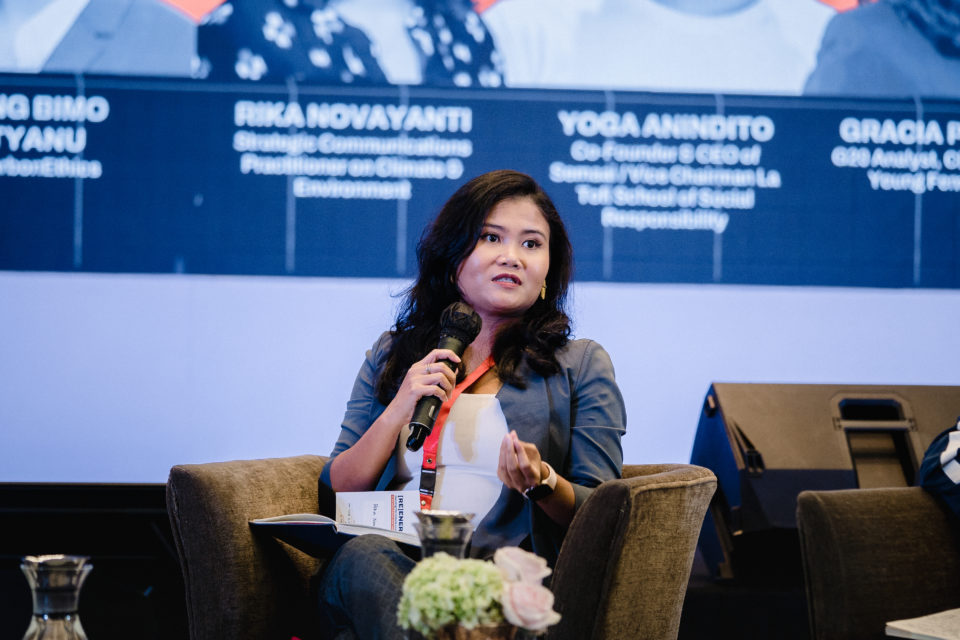
‘’When we talk about the energy transition, we need to highlight the significant structural changes in the energy system. It has to be a systematic change, not individual by individual, that changes the connection between energy demand and supply. I also want to highlight two things: energy efficiency, which to me is very important but still left behind and not discussed enough, and the second one is carbon emissions.’’
Rika Novayanti – Strategic Communications Practitioner on Climate & Environment
A clean energy startup’s success depends on how adaptable it is

‘’We need to be able to adapt. We need to be able to stay up-to-date and pivot. If you don’t have the talent to learn fast and be adaptable, you can get demotivated. Moreover, it’s crucial to embrace technology. Technology is intertwined with our culture and the people who drive it. Technology allows us to track data streamline tasks, and all in all, validate our credibility. Technology alone cannot replace people. But people who can use technology well (e.g., generative AI) can substitute those who don’t.’’
Agung Bimo Listyanu – CEO CarbonEthics
Understand what grassroots stakeholders need before you tackle the big picture

‘’Agriculture is one of the biggest contributors to carbon emissions in the world; therefore, we need to address this. However, there is a discrepancy between policymakers, startups, and people in the field because we all have different challenges we’re addressing. Therefore, if you want to get your feet wet in this industry, you need to go to the field and deal with the local authority and stakeholders as well.’’
Yoga Anindito, Co-Founder & CEO of Semaai / Vice Chairman La Tofi School of Social Responsibility.
We must motivate more aspiring entrepreneurs to join the fray
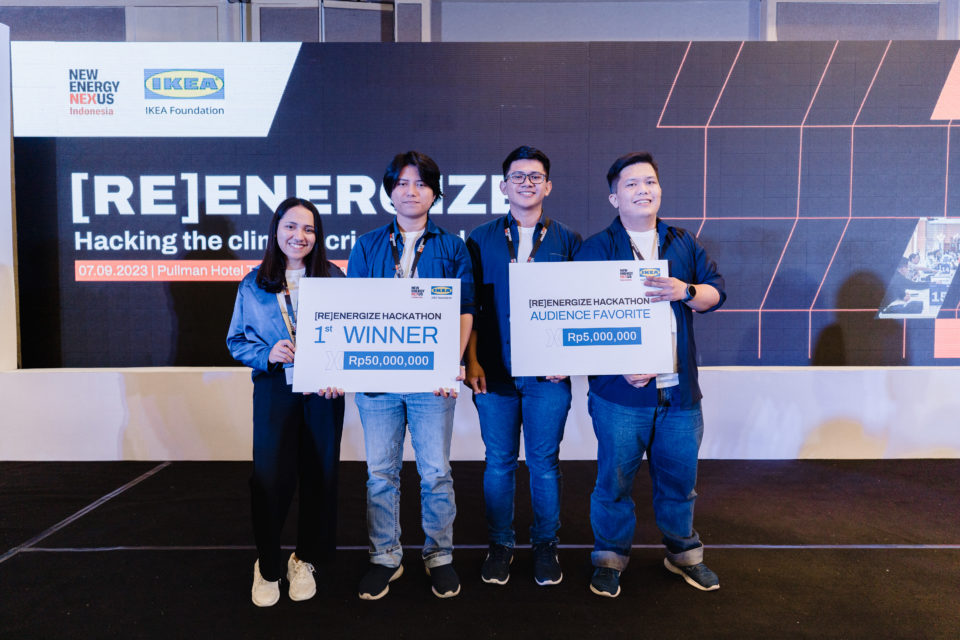
Bagas attended the [RE]Spark Hackathon in 2022, but this year, he decided to compete in the 2023 Hackathon.
“To my surprise and delight, I managed to secure the second-place position in the hackathon. This journey has been a testament to my commitment to continuous learning and growth. It’s not just about winning accolades; it’s about the progress I’ve made and the knowledge I’ve gained in my quest to find solutions that can contribute to mitigating the impacts of the climate crisis. This experience has reaffirmed my dedication to the cause, and I’m more determined than ever to make a meaningful difference in addressing the challenges of our changing climate.”
Bagas Prakoso Ajie – Team Leader at Terra Verde; [RE]Energize Hackathon 2nd Winner
Oakland, CA 13 September 2023 – The California Sustainable Energy Entrepreneur Development (CalSEED) program is thrilled to announce that 27 new Concept awards have been approved by the California Energy Commission (CEC).
For the Concept award, 27 companies out of 153 were selected to receive grants of US$150,000 to develop their breakthrough technologies. In total US$4 million of CEC EPIC funds will be invested in clean energy innovations throughout California.
“The CalSEED program has been successful in helping entrepreneurs working on promising climate solutions to get the support they need to scale up,” said David Hochschild, Chair of the California Energy Commission (CEC).
“Through the California Energy Commission’s EPIC research program, CalSEED is helping entrepreneurs turn great ideas into marketable solutions and providing benefits to California ratepayers.”
Concept awardees went through a rigorous process including a review with CalSEED’s curated review committee, who offered their time and expertise to score applications for technical merit, potential for social impact and energy equity, and team expertise. CalSEED’s solicitation is designed as a call for early-stage clean energy innovations that fall within the following technology areas: energy storage, DER integration and load flexibility, transportation electrification, building decarbonization, and industrial decarbonization.
“We’re thrilled to see so many clean energy entrepreneurs who are not only developing cutting-edge technology, but also thinking about circular and inclusive designs in the way they’re implemented” said Rebecca Lee, Managing Director New Energy Nexus California Programs. CalSEED is a program of New Energy Nexus in California.
Each year the CalSEED program selects new and emerging clean technology areas to fund to help California meet its climate goals. Within the upcoming cohort, 2 out of 27 companies are developing solutions to decarbonize the cement industry, which is currently responsible for 8.8% of industrial sector GHG emissions in California. The potential impact of transforming the way in which one of the most used materials in the world is created is one of the many ways the CalSEED program is working to bring the rapid transformation to a clean energy economy.
“This new cohort of CalSEED grant recipients stands at the forefront of new energy solutions and exemplifies California’s innovative ethos,” said Joy Larson, Program Director of CalSEED.
“With financial support, mentorship, connection to a large network, and the support of a community of fellow entrepreneurs, the CalSEED program offers a springboard for entrepreneurs to bring sustainable energy solutions and energy equity into the energy landscape.”
CalSEED is funded through the CEC’s EPIC program, which invests approximately $120 million annually for innovative clean energy technologies and approaches benefiting. the ratepayers of California’s three largest electric investor-owned utilities.
Details of the 27 companies awarded a total of US$4 million:
COHORT 6 CONCEPT AWARDEES:
About CalSEED
CalSEED is funded through the CEC’s EPIC program which invests approximately $120M annually for innovative clean energy technologies and approaches benefiting the ratepayers of California’s three largest electric investor-owned utilities. Through the CalSEED initiative US$25M will be deployed to back over 80 startups in coming years. CalSEED is administered by New Energy Nexus.
About the California Energy Commission
The California Energy Commission is leading the state to a 100 percent clean energy future. It has seven core responsibilities: developing renewable energy, transforming transportation, increasing energy efficiency, investing in energy innovation, advancing state energy policy, certifying thermal power plants, and preparing for energy emergencies. For more information, please go to energy.gov.ca .
Tristan Tremschnig
Communications Director, New Energy Nexus
tristan.tremschnig@newenergynexus.com
(based in San Francisco, USA)
About New Energy Nexus
New Energy Nexus (NEX) is an international organization that strives towards a 100% clean energy economy for 100% of the population. It does this with a laser focus on diverse entrepreneurs, supporting them with accelerators, funds, skills, and networks they need to thrive. NEX has accelerated 1,500+ startups, empowered over 10,400+ entrepreneurs, and mobilized over US$4.7 billion in investment. Since its founding in California in 2004, NEX now operates programs or advisory services in Australia, China, India, Indonesia, Nigeria, Pakistan, the Philippines, Thailand, the UAE, Uganda, the USA (California and New York), and Vietnam.
Jakarta, 13 September 2023 – The government of Indonesia should play a more active role in growing the country’s nascent cleantech startup ecosystem, which is critical to accelerating the energy transition and unlocking the economic potential of clean energy, according to a report from New Energy Nexus Indonesia: Clean Energy Technology Startups in Indonesia: How the Government Can Help the Ecosystem.
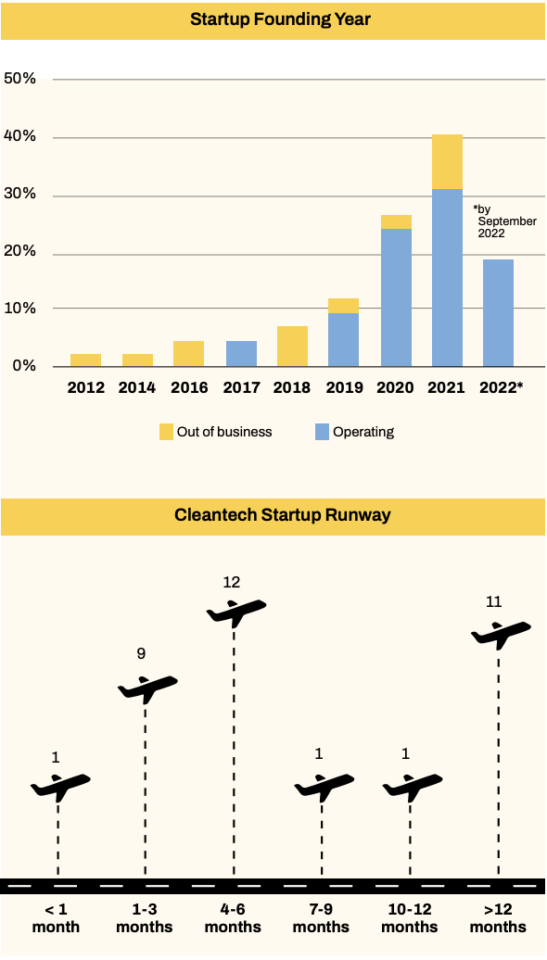 Government support is crucial given that the majority of cleantech startups in Indonesia are still in the early stage of development, and often struggle to obtain support and funding for their technology and business.
Government support is crucial given that the majority of cleantech startups in Indonesia are still in the early stage of development, and often struggle to obtain support and funding for their technology and business.
“The Indonesian government should learn from other countries, and create an environment for cleantech startups to thrive. This support could be in the form of fiscal, financial, and non-financial support accessible to actors in the cleantech startup ecosystem such as startups, venture capital, incubators, and others,” said Pamela Simamora, the lead author of the report at New Energy Nexus Indonesia.
“The support needed for clean energy startups is different from any other established digital startups for instance, the majority of these startups are hardware-based and require a more intensive R&D for their technology development.”
The report survey showed that 22 out of 35 cleantech startups have a runway of less than six months – whereas startups should ideally have a runway of at least 18 months. The survey results also show that the majority of cleantech startups in Indonesia are still bootstrapping and have not been able to secure external funding.
The report highlights several challenges faced by cleantech startups, ranging from difficulty in accessing funding, limited R&D funds for technology development, difficulty in finding a skilled workforce in the clean energy technology field, as well as the weak regulatory framework in the sector. In addition, the majority of venture capital firms mentioned in the report that the limited number of cleantech startups in their portfolios is not due to a lack of interest in this sector, but rather due to the high risks in the clean energy sector in Indonesia given inadequate policies and regulations. The same is mentioned by business incubators and similar organizations surveyed in this report.
“Indonesia can learn from other countries that have already developed cleantech startup ecosystems. For example, the provincial government of British Columbia in Canada provides incentives in the form of tax credits for investors who invest in early-stage companies in the clean energy technology sector.”
“In addition, incubation programs, accelerations, and startup competitions organized by various ministries and government agencies need to be aligned to maximize their impact on the startup ecosystem and eliminate overlapping programs,” said Pamela Simamora, the lead author of the report at New Energy Nexus Indonesia.
“The government, for example, can differentiate each program based on the Technology Readiness Level (TRL) of startups participating in programs like Startup4industry, ETIC KESDM, PLN Elevation, and PPBR BRIN. This aligns with best practices in countries like the United States, Chile, and Morocco.”
Additional recommendations:
“The government should focus more on early-stage startups rather than late-stage ones to prevent public funds from crowding out private capital from the market,” said Pamela.
The growth of this sector has tremendous potential for job creation, economic development, and technological innovation. By supporting cleantech startups, the Indonesian government can achieve its climate goals, promote economic growth, ensure energy resilience, and enhance the country’s competitiveness in the global market
View the report here.
Tristan Tremschnig
Communications Director, New Energy Nexus
tristan.tremschnig@newenergynexus.com
(based in San Francisco, USA)
About New Energy Nexus
New Energy Nexus (NEX) is an international organization that strives towards a 100% clean energy economy for 100% of the population. It does this with a laser focus on diverse entrepreneurs, supporting them with accelerators, funds, skills, and networks they need to thrive. NEX has accelerated 1,500+ startups, empowered over 10,400+ entrepreneurs, and mobilized over US$4.7 billion in investment. Since its founding in California in 2004, NEX now operates programs or advisory services in Australia, China, India, Indonesia, Nigeria, Pakistan, the Philippines, Thailand, the UAE, Uganda, the USA (California and New York), and Vietnam.
Canberra, 11 September 2023 – Australia risks being left behind in the global renewables race unless the Australian Government urgently commits to a new $100 billion Australian Renewables Industry Package, according to a major new coalition of leading renewable energy, business, union, community and investor groups.
The diverse group of organisations has today joined forces at the Australian Renewables Industry Summit in Canberra to call for ambitious new policies that will secure a once-in-a-generation economic opportunity for the nation.
This follows the government’s commitment made in the last Federal Budget to respond to the passage of historic renewable industry policies overseas, including the Inflation Reduction Act in the United States.
The call for a ten-year $100 billion Australian Renewables Industry Package is endorsed by groups including the Australian Conservation Foundation, Australian Council of Trade Unions, Climate Action Network Australia, Climate Energy Finance, First Nations Clean Energy Network, New Energy Nexus, Rewiring Australia and the Smart Energy Council.
With a global renewables industrial revolution underway, the group says Australia must act with speed and ambition now to fully realise the employment, export, economic, emissions reduction, environmental and social benefits for our nation, businesses and whole community before it is too late.
The U.S. Inflation Reduction Act has made this a global technology and investment race, at speed. That means funding more ambitious industrial support packages to build new clean industries, attract greater investment and create thousands of new secure jobs, as what is currently happening under the ~US$1 trillion Inflation Reduction Act in the U.S.
The group says a decade-long AU$100 billion new Australian Renewable Industry Package is essential to drive nation-building benefits for Australia.
“Australia is standing at a crucial juncture in our nation’s history,” said Smart Energy Council Chief Executive, John Grimes.“Our world-leading resources and renewable energy potential provide the opportunity for Australia to become a driving force in the global green economy while driving down emissions in line with the science to maintain a safe climate.
“But without significantly greater investment, we simply won’t be able to build the industries of the future, reduce emissions, create jobs or strengthen national prosperity and social equity.”
“We need a far more integrated and ‘big picture’ approach to encourage greater investment, commensurate with the scale of this massive renewables and critical minerals/metals embodied decarbonisation export opportunity for Australia,” said Climate Energy Finance Founder, Tim Buckley.
“A AU$100 billion package will help re-industrialise the nation, create hundreds of thousands of jobs, diversify our export base and revenue streams as well as increase local value-added production, secure supply chains and develop sovereign manufacturing capabilities. This is climate policy as economic policy as national security policy – in the 21st century, these are fundamentally linked.”
“Australia is well placed to seize opportunities in clean energy and manufacturing. We are in a climate crisis and as the largest exporter of coal and LNG in the world, Australia has a unique opportunity to take a leading role in decarbonising critical industries such as iron and steel. The Australian Renewable Industry Package is needed to reduce industrial emissions and retain a safe climate,” said Australian Conservation Foundation CEO, Kelly O’Shanassy.
“The U.S., Canada, European Union, India, Korea and Japan are already committing hundreds of billions of dollars towards clean industrial support packages – Australia needs to take big action now to fulfill our enormous clean energy potential and create hundreds of thousands of well-paid, safe and secure jobs. Both the urgency of the climate crisis and the enormity of the clean energy opportunity for workers, their families and communities call for a bold, ambitious, fair and timely response from government,” said Australian Council of Trade Unions President, Michele O’Neil.
Jacqueline O’Neill (Ogilvy PR)
jacqueline.oneill@ogilvy.com.au
+61 449 107 774
Tristan Tremschnig
Communications Director, New Energy Nexus
tristan.tremschnig@newenergynexus.com
(based in San Francisco, USA)
About New Energy Nexus
New Energy Nexus (NEX) is an international organization that strives towards a 100% clean energy economy for 100% of the population. It does this with a laser focus on diverse entrepreneurs, supporting them with accelerators, funds, skills, and networks they need to thrive. NEX has accelerated 1,500+ startups, empowered over 10,400+ entrepreneurs, and mobilized over US$4.7 billion in investment. Since its founding in California in 2004, NEX now operates programs or advisory services in Australia, China, India, Indonesia, Nigeria, Pakistan, the Philippines, Thailand, the UAE, Uganda, the USA (California and New York), and Vietnam.
We recently hosted around 200 women leaders, startups, youth, industry experts and community advocates at the ‘Bali Women Leaders Network’. When you have that much talent in one room, we knew we had to ask them to share their advice!
The event, in partnership with ClimateWorks Foundation and facilitated by Pratisara Bumi Foundation, showcased the tremendous potential of women entrepreneurs in driving sustainability and climate action. Among the many women-led climate startups we invited we also celebrated 8 women-led start-startups that successfully completed our ‘Business Incubation and Acceleration Program’.
Here are some key takeaways.
Lala Maelani, the CEO of Gumitri, highlighted the significance of understanding the motivations behind one’s actions.
“Find that common ground, discover the reasons why you do what you do. When you have a clear understanding of your motivations, even in the face of challenges, those reasons will reignite your passion and empower you to overcome obstacles. It is also vital to have a shared mission with your partners, ensuring that regardless of the path ahead, the commitment among colleagues remains unwavering due to the shared vision, mission, and values.”
Yufi Gobel, the Founder and CEO of Chickbecik, emphasized the importance of having a mentor during the startup development process.
“Having a mentor is crucial when building a startup. When I connected with the New Energy Nexus Indonesia team, I learned to refine my ideas and challenge my assumptions while understanding the realities of the market. This led to a transformation in our business approach. My message to those interested in developing a startup or innovation is to seek out a mentor. With the guidance of mentors, we can conduct more focused and measurable product testing, and make better decisions regarding every risk and opportunity.”
Marcella Steffany, Communications and Business Development Officer at Tri Hita Consulting, emphasized the importance of establishing an empowering environment for women to thrive in their careers.
“Creating an enabling environment plays a vital role in our success as women professionals. Having a supportive team, mentors who believe in us, and an environment that values our contributions based on our capabilities rather than our gender are key factors that contribute to our growth and achievements.”

Dini Septiani (AVPN), Atika Benedikta (ANGIN), Samantha Tedjosugondo (Sweef Capital), Helga Tjahjadi (Burgreens)
During the event, another insightful session on fundraising and gender-lens investing, moderated by Dini Septiani, ASEAN Regional Director of AVPN, featured an open and candid discussion between two gender-lens investors and a female founder. Helga Tjahjadi, the CEO & Co-Founder of Burgreens & Green Rebel, shared her journey of building a successful food and beverage business alongside her partner, Max Mandias.
“Throughout our fundraising journey, I encountered discrimination from certain venture capitalists who believed that my maternity leave would impact our business milestones. However, we were fortunate to connect with angel investors and venture capitalists who were supportive of my pregnancy and played a pivotal role in our business’s growth.
“As a result, we secured funding prior to my maternity leave and devised plans to ensure the company’s continuity during my absence. Today, women have more allies and support to pursue their goals, but there is still progress to be made within the system for investors to fully recognize and embrace the value that female founders bring.”
Atika Benedikta emphasized the significance of gender-lens investing and women’s empowerment:
“Supporting and fostering an enabling environment that empowers women as stakeholders, contributors, doers, and decision-makers is crucial. The contributions and perspectives of women hold equal importance. It’s not about power or competition but about empowering everyone equally.”
Tasya Karissa, the Founder and Executive Director of Biorock Indonesia, shared her experience in overcoming challenges caused by having two distinct entities, a foundation and a PT.
“One of the difficulties I encountered was managing the administrative tasks effectively due to Biorock Indonesia’s dual structure. As a leader, I realized the importance of overseeing multiple aspects, and establishing a well-organized administrative system became critical for our operational efficiency. Thanks to the guidance of mentors through the New Energy Nexus Indonesia’s Bali Women Climate Entrepreneur Project, I now have a standardized operating procedure for administration.”
Samantha Tedjosugondo highlighted the importance of acknowledging and addressing challenges in entrepreneurship:
“Recognizing risks and challenges is crucial, but what matters more is having an effective mitigation strategy. We admire startup management teams that openly acknowledge and actively tackle the obstacles they encounter. Risks coexist with promising opportunities, and it’s essential for both leaders and team members to be aware of this reality.”
Sukriyatun Niamah, the Founder and Marketing Director of Robries, discussed her company’s efforts in recycling plastic waste. Despite facing challenges as a young female leader in business, she refused to be underestimated. Niam emphasized the importance of collaborating with diverse partners, embracing different habits and mindsets. Her determination to realize her ambitious vision surpasses these obstacles. Currently, Robries has successfully partnered with over 100 individuals from diverse communities and waste collectors.
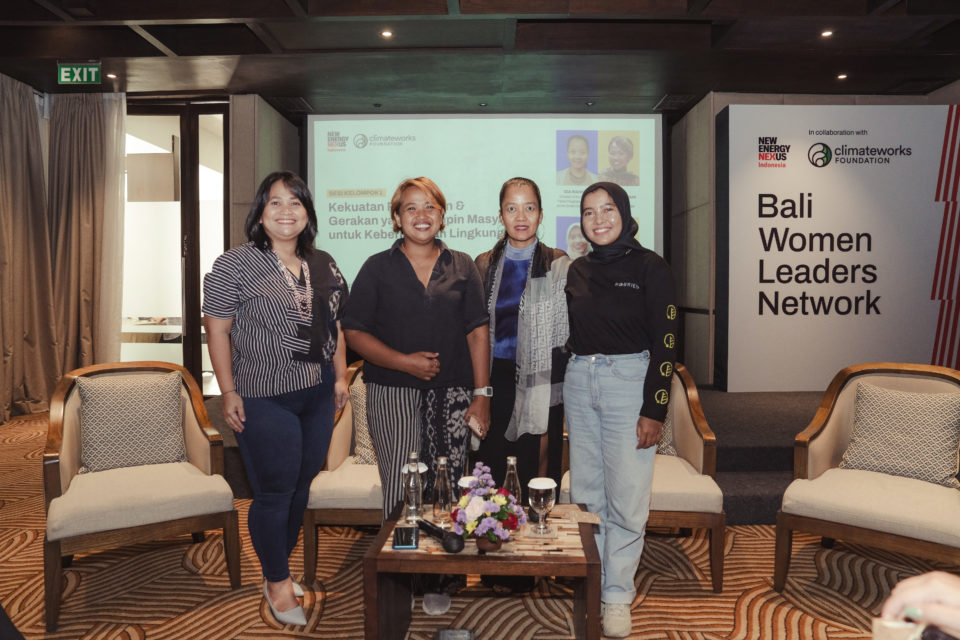
Thilma Komaling, Aniek Puspawardhani (Kelecung Village Eco Tourism), Ida Rahayu (Seeds to Table), Sukriyatun Niamah (Robries)
Aniek Puspawardani, the project lead for Desa Wisata Kelucung, expressed her concerns about the impact of land use changes on the livelihoods of the farming community in Kelucung Village. She highlighted the importance of creating sustainable employment opportunities, such as homestay businesses, culinary ventures, merchandise, and other tourism-supporting enterprises, to increase their income. However, this must be accompanied by training programs to develop professional skills across various professions in Desa Kelucung. Additionally, support from stakeholders is crucial to achieving self-sufficiency and empowerment for the village.
Ida Rahayu, the Creator of Seeds to Table, shared insights into her permaculture-based program that tackles waste and food production challenges. She emphasized the importance of paying attention to food labels and understanding the impact of our consumption on our health and well-being. Ida highlighted key steps we can take, such as growing our own food or supporting local farmers, minimizing packaging waste, opting for organic food, and practicing proper waste sorting. She also encouraged cooking our own meals to gain a better understanding of what we consume.
Women are paving the way to become leaders in their communities. Our programs in New Energy Nexus Indonesia aim to close the gender gap and increase women’s participation in clean energy and climate solutions sectors, helping to improve women’s response and adaptation to climate change.
Learn more New Energy Nexus Indonesia

Senior Investment Associate, New Energy Nexus Indonesia
”As a senior investment associate at New Energy Nexus Indonesia, I’ve reviewed hundreds of pitch decks from startups seeking funding.
It’s no easy task creating a well-narrated pitch deck that captures investors’ attention and effectively communicates your startup’s value proposition. But, here are five essential tips to help you create a killer pitch deck that will maximize your chances of securing funding for your climate startup.”
1. Start with a compelling problem statement
Begin your pitch deck by defining the problem related to climate change that your startup is addressing. Show the urgency and significance of the problem, highlighting not only the destructive impact to the environment but more importantly, the pain points experienced by the users/customers (“the impacted stakeholders”) and its relevance to the local context. You can use statistics, visuals, or real-world cases to make it more compelling. A great problem statement will grab investors’ attention and help them recognize the urgency, relevance, and necessity of your solution.
2. Articulate your unique value proposition
After presenting the problem, you now need to present your startup’s innovative solution. Clearly explain how your technology or product addresses the problem more effectively than existing solutions. Investors need to see the uniqueness and potential for disruption in your approach, why your solution is better than any other solution out there, and why customers would want to buy your product or service. Your solution should be clear and concise, focusing on the heart of the problem, not every last feature.
Explaining the product features with a short video demo or a diagram can be presented in another section of the deck (the product section), while the solution slide should only be telling us: “why instead of doing that, we do this.” Investors shouldn’t spend minutes digesting the content — it should be obvious and to the point. So keep the visuals lightweight in this slide.
3. Showcase your market opportunity
Investors want to know how big the market size is, and how you are going to capture that market. Provide a reasonable Total Addressable Market (TAM), Serviceable Addressable Market (SAM), and Serviceable Obtainable Market (SOM) and translate that into $$ value.
You can also include data such as growth rate, key market trends, and highlight any regulatory or policy support that could further catalyze your startup’s growth. A clear market assessment will instill confidence in investors regarding the scalability and potential for profit and impact of your venture.
4. Present a solid business model
Illustrate your business model to demonstrate how your startup generates revenue and achieve profitability as well as impact. Clearly explain your revenue streams, pricing strategy, and financial viability. A well-defined business model will convince investors of your ability to generate sustainable returns on their investments.
5. Highlight your team members
Investors place emphasis on the execution capabilities of the founding team. Therefore it is crucial to fit in a dedicated page in your deck to introduce key members of your team and highlight their relevant experience and expertise. Showcase any previous achievements, partnerships, or notable milestones that demonstrate your startup’s progress and momentum. Let them know how strategic and capable your team is!
Lastly, there is no such thing as a one deck-fits-all. You need to craft each pitch decks according to whom you are addressing and identifying each investor’s focus or appetite. But all pitch deck require compelling storytelling, market insights, and financial viability. Be sure to iterate and refine your pitch deck based on feedback and learnings from each interaction with investors and practice your presentation skills.
If you’re in Indonesia and looking for the best-fitting investors to help with your startup journey, New Energy Nexus Indonesia is hosting an Investment Speed Dating event for clean energy and climate tech startups. The event is happening on 7 September 2023 and we are accepting applications from 5 June to 14 July 2023.
Are you ready? Submit your pitch deck now!